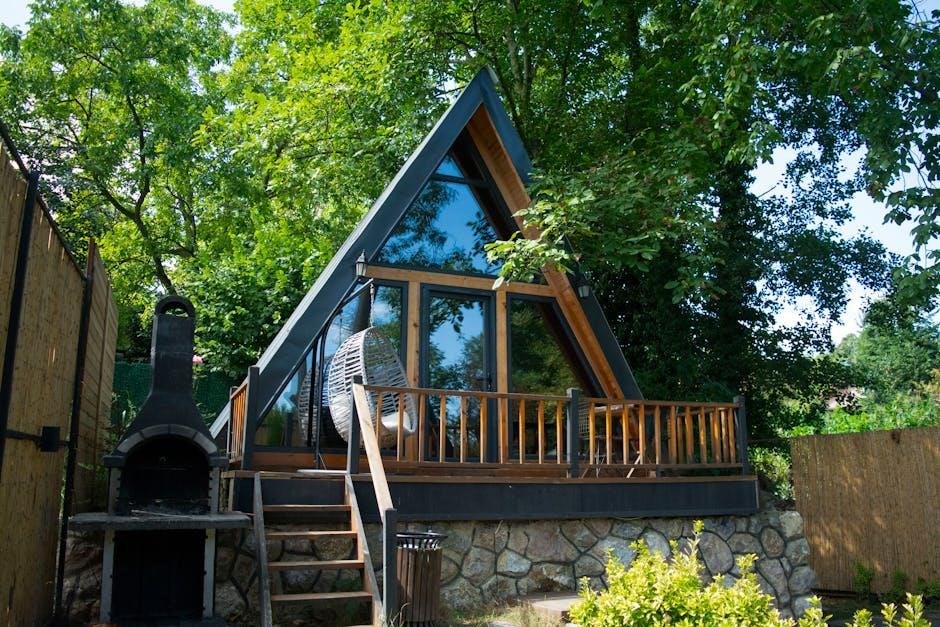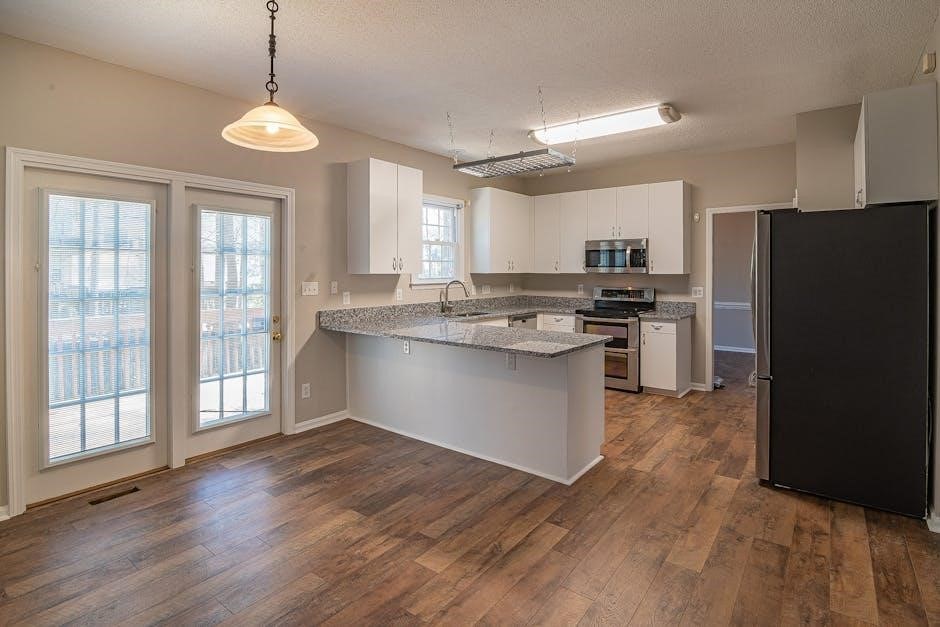
Wood Stove Plans PDF: A Comprehensive Guide
Navigating the world of wood stove plans requires careful consideration. PDF formats offer accessible blueprints for building efficient and safe heating solutions, empowering DIY enthusiasts.
Understanding Wood Stove Plans
Wood stove plans, particularly in PDF format, are detailed guides for constructing a heating appliance. These plans aren’t simply drawings; they represent a comprehensive set of instructions, encompassing everything from material lists and precise measurements to assembly techniques and safety protocols.
Successfully interpreting these plans demands a foundational understanding of basic construction principles, welding (if applicable), and metal fabrication. Different plans cater to varying skill levels, ranging from beginner-friendly box stoves to more complex catalytic or rocket mass heater designs.
Crucially, understanding the plan’s adherence to local building codes and safety regulations is paramount before commencing any construction. A well-defined plan will clearly outline these considerations, ensuring a safe and legally compliant installation.
Types of Wood Stoves & Corresponding Plans
Wood stove plans available in PDF format cover a diverse range of designs, each with unique characteristics and construction requirements. Classic box stoves are often the simplest, ideal for beginners, with plans focusing on sheet metal fabrication and basic assembly. Catalytic stoves, more efficient, necessitate plans detailing complex air control systems and catalyst installation.
Rocket mass heaters represent a more advanced option, requiring plans that illustrate intricate combustion chambers, thermal mass integration, and chimney design. Beyond these, you’ll find plans for soapstone stoves, hybrid designs, and even outdoor wood furnaces.

The chosen plan should align with your heating needs, skill level, and available materials. PDF plans typically specify the stove’s BTU output, efficiency rating, and suitable wood types.
Where to Find Free Wood Stove Plans PDF

Locating free wood stove plans in PDF format requires diligent searching, but several online resources offer viable options. Websites dedicated to DIY projects and homesteading frequently host user-submitted plans, though verifying their accuracy is crucial. Online forums focused on wood heating often feature shared plans and discussions regarding modifications.
Beware of incomplete or poorly documented plans; prioritize those with detailed diagrams and comprehensive materials lists. Reputable websites specializing in alternative heating solutions sometimes provide introductory plans as samples.
Remember that “free” plans may lack the professional engineering and safety certifications found in paid resources. Always prioritize safety and consult with experienced builders before commencing construction.
Popular Wood Stove Designs & Their Plans
Several wood stove designs consistently appear in free PDF plan collections, each offering unique benefits. The classic box stove, known for its simplicity, is a common starting point for beginners, with plans emphasizing straightforward construction. Catalytic stoves, promoting cleaner burning, require more complex plans detailing the catalytic combustor installation.

Rocket mass heaters, gaining popularity for their efficiency, feature intricate plans focusing on the J-tube and bench construction. These plans often include thermal mass integration details.

Hybrid designs, combining elements of different stove types, present more challenging plans requiring advanced fabrication skills. Thoroughly review plan complexity before selecting a design.
Classic Box Stove Plans
Classic box stove plans, frequently available as free PDFs, represent the most straightforward wood-burning stove construction. These plans typically detail a rectangular steel body, often utilizing plate steel for durability. Emphasis is placed on simple cutting and welding techniques, making them ideal for novice fabricators.
PDFs usually include dimensions for the firebox, door opening, and flue collar. Detailed diagrams illustrate plate arrangement and weld locations. Material lists are concise, primarily consisting of steel, firebrick (for lining), and basic hardware.
While efficient, classic box stoves lack advanced combustion features. Plans may offer optional modifications like air controls for improved burn rates.
Catalytic Wood Stove Plans
Catalytic wood stove plans, often found in PDF format, detail stoves employing a catalytic combustor to significantly reduce emissions and increase efficiency. These plans are more complex than basic box stove designs, requiring precise fabrication and component placement.
PDFs will illustrate the combustor’s integration within the exhaust system, alongside detailed instructions for air intake and secondary combustion chamber construction. Material lists expand to include the catalytic combustor itself, along with specialized baffles and air control mechanisms.
Successful builds demand careful adherence to plan specifications, as proper combustor function relies on optimal airflow and temperature control. These stoves offer cleaner burning and higher heat output.
Rocket Mass Heater Plans
Rocket mass heater (RMH) plans, frequently available as PDFs, represent a distinct heating approach focused on thermal mass storage. Unlike conventional stoves, RMHs prioritize efficient combustion and heat retention within a large thermal mass – typically cob, stone, or brick.
PDF plans detail the J-tube combustion chamber, feed tube, and the extensive bench or thermal mass structure. They emphasize proper dimensions for efficient airflow and complete combustion, minimizing smoke output. Material lists include firebricks, insulation, and materials for the thermal mass itself.
Building an RMH requires understanding heat transfer principles and masonry skills. These systems offer long-lasting, radiant heat, but demand careful construction and planning.
Essential Elements of a Wood Stove Plan
Comprehensive wood stove plans, often distributed as PDFs, must contain several key elements for successful and safe construction. First, detailed diagrams and measurements are crucial, illustrating every component and its precise dimensions – from the firebox to the flue pipe.
A complete materials list & cost estimation allows builders to accurately budget and source necessary supplies, including steel gauge, firebrick, and gaskets. Equally vital are safety considerations & regulations, outlining proper clearances to combustibles, venting requirements, and local building codes.
PDF plans should clearly indicate welding specifications, baffle placement, and door sealing methods, ensuring efficient combustion and minimizing emissions.
Detailed Diagrams & Measurements
High-quality wood stove plans in PDF format prioritize exceptionally detailed diagrams and precise measurements. These aren’t merely sketches; they are orthographic projections – top, front, and side views – showcasing every angle and component.
Measurements must be provided in both imperial and metric units for broader accessibility. Critical dimensions include firebox size, baffle positioning, flue pipe diameter, and steel plate thicknesses. Cut lists detailing the quantity and dimensions of each piece are essential for efficient material usage.
Furthermore, plans should illustrate welding joint types, bend radii, and hole placements with accuracy, minimizing guesswork during fabrication and ensuring structural integrity.
Materials List & Cost Estimation
Comprehensive wood stove plans PDF documents invariably include a meticulously detailed materials list. This extends beyond simply stating “steel plate”; it specifies the gauge (thickness), grade, and required quantity of each component. Common materials include steel, cast iron, firebrick, and various fasteners.

A robust plan will also offer a cost estimation, breaking down expenses for each material. However, pricing fluctuates significantly based on location and supplier. The estimate should clearly state assumptions about material sourcing (e.g., new vs. reclaimed steel).
Including potential costs for welding consumables, paint, and gaskets provides a more realistic budget projection for builders undertaking the project.
Safety Considerations & Regulations
Wood stove plans PDF must prioritize safety, explicitly addressing crucial considerations. This includes proper clearances to combustible materials – walls, floors, and ceilings – to prevent fires. Detailed instructions regarding chimney installation, including height and diameter requirements, are essential.
Plans should also highlight the importance of using appropriate fire-resistant materials and adhering to local building codes and regulations; Many jurisdictions require permits for wood stove installation and may have specific standards for emissions and safety features.
A responsible plan will emphasize carbon monoxide detection and proper ventilation, safeguarding against hazardous fumes. Ignoring these aspects can lead to severe consequences.
Legal Aspects & Permits for Wood Stove Installation
Before embarking on a wood stove project using PDF plans, understanding local legal requirements is paramount. Most municipalities mandate permits for installing wood-burning appliances, ensuring compliance with safety and environmental standards.
These permits often necessitate inspections to verify proper installation, clearances, and chimney construction. Ignoring permit requirements can result in fines or forced removal of the stove. Regulations frequently address emission standards, particularly for older, non-EPA-certified stoves.
Homeowners insurance policies may also be affected by unpermitted installations. Thoroughly research your local building codes and contact your municipality’s building department to confirm all necessary permits and inspections.
Tools & Skills Required for Building a Wood Stove
Successfully constructing a wood stove from PDF plans demands a specific skillset and access to appropriate tools. Welding is frequently essential, requiring proficiency in techniques like MIG or stick welding for joining steel components.
Metal fabrication skills are crucial, including cutting, bending, and shaping steel plates. A plasma cutter, angle grinder, and metal-cutting saw are highly recommended. Precise measuring and layout abilities are vital for accurate assembly.
Beyond metalworking, basic carpentry skills may be needed for building surrounding enclosures or hearths. Safety gear – welding helmet, gloves, eye protection – is non-negotiable. A solid understanding of physics and heat transfer is beneficial for optimal design.
Step-by-Step Construction Guide (Based on PDF Plans)
Following PDF plans meticulously is paramount. Begin by Preparing the Materials: accurately cut steel plates according to dimensions, ensuring clean edges. Gather all necessary hardware – bolts, screws, firebricks. Next, Assembly & Welding/Fitting: carefully join components, prioritizing structural integrity.
Welding should be done in a well-ventilated area, adhering to safety protocols. Dry-fit parts before welding to confirm alignment. Finishing & Testing involves grinding welds smooth, applying high-temperature paint, and installing door/air controls.
Crucially, conduct a test burn in a safe, open space, monitoring for leaks or malfunctions. Refer to the PDF plans for specific testing procedures and safety guidelines throughout each stage.
Preparing the Materials
Accurate material preparation is foundational for success. Begin by cross-referencing the PDF plan’s materials list, verifying quantities and specifications. Steel plates must be cut precisely to the dimensions outlined – plasma cutters or angle grinders are commonly used, requiring safety glasses and gloves.

Firebricks, essential for heat retention, should be inspected for cracks and properly sized. Gather all hardware: bolts, screws, welding rods, and high-temperature sealant. Pre-fitting components before welding is crucial; this ensures accurate alignment and minimizes errors.
Organize materials logically to streamline the assembly process, preventing delays and frustration. Double-check all measurements against the PDF plan before proceeding to the next stage.
Assembly & Welding/Fitting
Precise assembly, guided by the PDF plans, is paramount. Begin by tack-welding components to ensure proper alignment before completing full welds. Utilize appropriate welding techniques for the steel thickness, prioritizing strong, consistent seams. Regularly check for squareness and levelness throughout the process.
If the plan involves fitting rather than welding, ensure tight joints and secure fastenings. High-temperature sealant should be applied liberally to all seams to prevent smoke leakage and ensure airtight construction. Carefully install the door, baffle plates, and air intake controls, referencing the PDF diagrams.
Continuously verify dimensions against the plan during assembly to maintain accuracy and structural integrity.
Finishing & Testing
After assembly, a thorough finishing process enhances durability and aesthetics. Apply high-temperature paint specifically designed for wood stoves, following manufacturer’s instructions for application and curing. This protects against rust and corrosion, extending the stove’s lifespan.
Prior to first use, a crucial testing phase is essential. Perform a cold test by visually inspecting all welds and seams for gaps or weaknesses. Then, conduct a small, controlled burn, gradually increasing the fire size while monitoring for smoke leaks or structural issues.
Ensure proper draft and combustion before relying on the stove for regular heating. Address any identified problems before full operation.

Safety Precautions During Construction & Use
Building and operating a wood stove demands strict adherence to safety protocols. Wear appropriate personal protective equipment (PPE) – safety glasses, gloves, and a welding helmet during construction. Ensure adequate ventilation when welding or cutting metal to avoid inhaling fumes.
During use, maintain a safe distance between the stove and combustible materials, adhering to clearances specified in the plans and local building codes. Install a carbon monoxide detector and smoke detector nearby, testing them regularly.
Never burn treated wood, plastics, or flammable liquids. Regularly inspect the chimney for creosote buildup and clean it as needed to prevent chimney fires.
Troubleshooting Common Wood Stove Issues
Even with careful construction from PDF plans, issues can arise. A common problem is insufficient draft, often caused by a blocked chimney or improper stove height – ensure proper clearances are maintained. Smoke backdrafting indicates a negative pressure situation; check for competing exhaust fans.

If the stove isn’t heating efficiently, consider wood moisture content; seasoned wood burns hotter and cleaner. Cracks in the stove body, though rare with proper welding, require immediate attention and potentially professional repair.
Gasket leaks can reduce efficiency; replace worn gaskets promptly. Regularly inspect and address any issues to ensure safe and optimal performance.
Resources for Further Information & Support

Beyond PDF plans, numerous resources aid wood stove projects. Online forums dedicated to wood heating offer invaluable advice from experienced builders and users – a great place to troubleshoot issues and share successes.
Local building inspectors can clarify code requirements and ensure your stove meets safety standards. Manufacturer websites often provide detailed installation guides and support documentation.
Wood stove retailers frequently offer workshops and advice on stove selection, installation, and maintenance. The Hearth, Patio & Barbecue Association (HPBA) is a valuable resource for industry standards and certified professionals. Don’t hesitate to seek expert guidance throughout your project!
Advanced Wood Stove Designs & Modifications
For experienced builders, exploring advanced designs expands heating capabilities. PDF plans can be adapted for features like secondary combustion systems, increasing efficiency and reducing emissions – crucial for environmental responsibility.
Adding a catalytic combustor or modifying air intake systems requires careful engineering and understanding of combustion principles. Rocket mass heater designs, though complex, offer exceptional heat retention and fuel efficiency.
Integrating thermal mass, such as stone or concrete, around the stove can store heat for prolonged release. Remember, modifications may necessitate re-evaluation of safety standards and local regulations. Thorough research and professional consultation are vital before implementing advanced changes.
Choosing the Right Wood Stove Plan for Your Needs
Selecting the ideal wood stove plan hinges on several key factors. Consider your heating requirements – the size of the space, climate, and desired heat output. PDF plans detail BTU ratings, aiding in accurate sizing.
Assess your skill level. Complex designs demand advanced welding and fabrication skills, while simpler box stoves are suitable for beginners. Evaluate fuel availability; some stoves are optimized for specific wood types.
Prioritize safety features outlined in the plan, such as proper clearances and ventilation. Factor in budget, accounting for materials and potential modifications. Thoroughly review the plan’s specifications and ensure it aligns with your capabilities and local regulations.